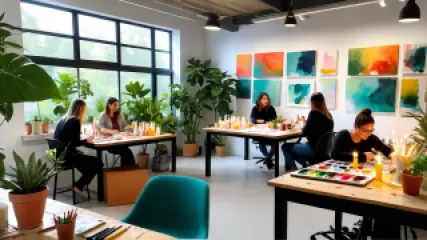7 Proven Steps to Boost Creativity for Therapists Working with Creative Individuals
7 Proven Steps to Boost Creativity for Therapists Working with Creative Individuals
As a therapist working with creative individuals, you have the unique opportunity to help unleash their full creative potential. Creativity is not just a trait – it's a skill that can be cultivated and nurtured. In this comprehensive guide, we'll explore seven proven steps that can help your clients enhance their creative abilities and unlock new avenues for self-expression and personal growth.
Step 1: Establish a Safe and Supportive Environment
The foundation for fostering creativity lies in creating a safe and supportive environment for your clients. This means providing a space where they feel comfortable taking risks, experimenting, and expressing their authentic selves without fear of judgment or criticism. Encourage open and honest communication, and make it clear that all ideas and perspectives are welcomed and valued.
One way to establish this environment is by employing active listening techniques. Truly listen to your clients, ask thought-provoking questions, and make them feel heard and understood. This helps build trust and rapport, which are essential for creative exploration.
Step 2: Encourage Playfulness and Experimentation
Creativity thrives in an atmosphere of playfulness and experimentation. Encourage your clients to approach their creative pursuits with a sense of curiosity and a willingness to try new things. Remind them that there are no right or wrong answers, and that the process is just as important as the final product.
Encourage your clients to engage in creative exercises and activities that challenge them to think outside the box. This can include brainstorming sessions, mindfulness exercises, or even physical activities that stimulate the senses and spark new ideas.
Step 3: Nurture Intrinsic Motivation
Intrinsic motivation, or the desire to engage in an activity for its own sake, is a key driver of creativity. Help your clients identify their intrinsic motivations and align their creative pursuits with their personal values and interests. When individuals are driven by an internal desire to create, they are more likely to persist through challenges and find deep fulfillment in their work.
Encourage your clients to reflect on what inspires them, what they're passionate about, and what kind of impact they want to have through their creativity. By tapping into their intrinsic motivation, you can help them cultivate a sense of purpose and a deeper connection to their creative process.
Step 4: Foster Divergent Thinking
Divergent thinking, or the ability to generate multiple ideas and solutions, is a hallmark of creativity. Encourage your clients to embrace a mindset of exploration, where they are not afraid to think outside the box and consider unconventional or even unusual ideas.
Engage your clients in activities that challenge them to generate as many ideas as possible, without judgment or evaluation. Brainstorming sessions, mind mapping exercises, and lateral thinking puzzles can all help stimulate divergent thinking and expand their creative horizons.
Step 5: Embrace Failure and Mistakes
In the pursuit of creativity, failure and mistakes are inevitable – and often necessary. Help your clients reframe their perception of failure, encouraging them to view it as an opportunity for growth and learning rather than a source of shame or frustration.
Remind them that successful creatives often stumble and experiment before finding their breakthrough. Celebrate the courage it takes to take risks and try new things, and help them develop a resilient mindset that allows them to bounce back from setbacks.
Step 6: Encourage Collaboration and Cross-Pollination
Creativity often thrives in the context of collaboration and cross-pollination of ideas. Encourage your clients to seek out opportunities to work with others, whether it's through group projects, peer-to-peer feedback sessions, or interdisciplinary workshops.
By exposing your clients to diverse perspectives and experiences, you can help them gain new insights and spark unexpected connections. Collaboration can also foster a sense of community and belonging, which can be incredibly motivating for creative individuals.
Step 7: Foster Mindfulness and Emotional Awareness
Creativity is deeply interconnected with our emotional experiences and our ability to be present in the moment. Encourage your clients to cultivate mindfulness practices, such as meditation, breathwork, or sensory awareness exercises, to help them connect more deeply with their inner experiences.
By enhancing their emotional awareness and self-reflection, your clients can gain a better understanding of their creative impulses, their sources of inspiration, and the emotional landscapes that inform their work. This, in turn, can help them develop a more authentic and fulfilling creative practice.
Conclusion: Unleash the Power of Creativity
By implementing these seven proven steps, you can help the creative individuals you work with unlock their full creative potential and experience the profound personal and professional benefits that come with it. Remember, creativity is a skill that can be developed and nurtured, and as a therapist, you have the unique opportunity to guide your clients on this transformative journey.
So, embrace the power of creativity and work with your clients to foster an environment that encourages exploration, risk-taking, and self-discovery. Together, you can unlock new avenues for growth, personal expression, and the pursuit of meaningful, fulfilling work.






